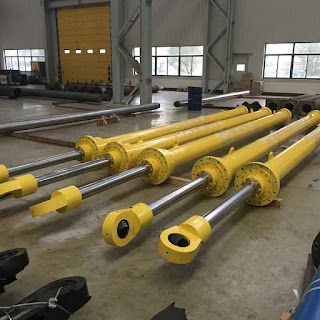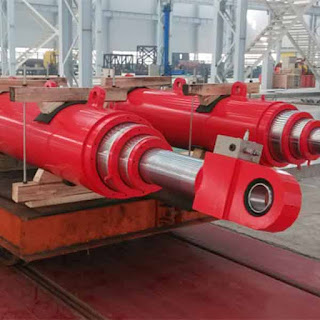What is Multistage Telescopic Cylinder?
Multistage hydraulic cylinders or telescopic hydraulic cylinders are a recent innovation that have enabled us to customize and enhance the application of various types of machinery. They are used for a wide range of applications including cultivation, construction, and civil engineering.
The primary advantage of the multi-stage hydraulic cylinder lies in the extension capabilities of its shaft, allowing it a far longer stroke when compared with other cylinders.
It consists of various tubular rods known as sleeves. These sleeves (usually five or six) are of decreasing diameters and are placed within each other. Once pressure is pumped into the cylinder, the largest sleeve (also known as barrel or main) is the first to extend. It is followed by subsequent sleeves up to the last one (known as a plunger) until it reaches its maximum extension.
The compact design of the multi-stage hydraulic cylinder allows it to enhance the function of process operations by proving particularly useful in areas where space is limited, and high amounts of pressure and force are required.
A potential solution for these applications is a multistage telescopic cylinder with two or more moving stages which can provide longer strokes relative to the retracted length. The most common type of telescopic cylinder is single acting which extends with hydraulic power but requires gravity or some other external force to retract. If the cylinder must be hydraulically powered in both directions, the solution is a double acting telescopic cylinder. However, a common mistake is expecting a double acting telescopic cylinder to replicate the performance of a typical single stage double acting cylinder. If the different operating characteristics of a double acting telescopic cylinder are not taken into consideration, the results can range from mild to serious machine malfunction.
We will refer to the most common design of double acting telescopic cylinders as “conventional”. This conventional design has a cross drilled port hole in each moving stage to communicate flow and pressure in and out of the annular volume. Because crossing a hole while under pressure would cause failure to a typical elastomeric piston seal, split cast iron rings are typically used. Although these cast iron rings are robust and durable, they allow some bypass leakage, which allows the cylinder to drift under load. In our rental yard example, if a cylinder is replaced with a conventional double acting telescopic cylinder, a boom left up in the air would come slowly down to rest on the ground. Likewise, an induced tensile load would cause the cylinder to drift out.



Comments
Post a Comment